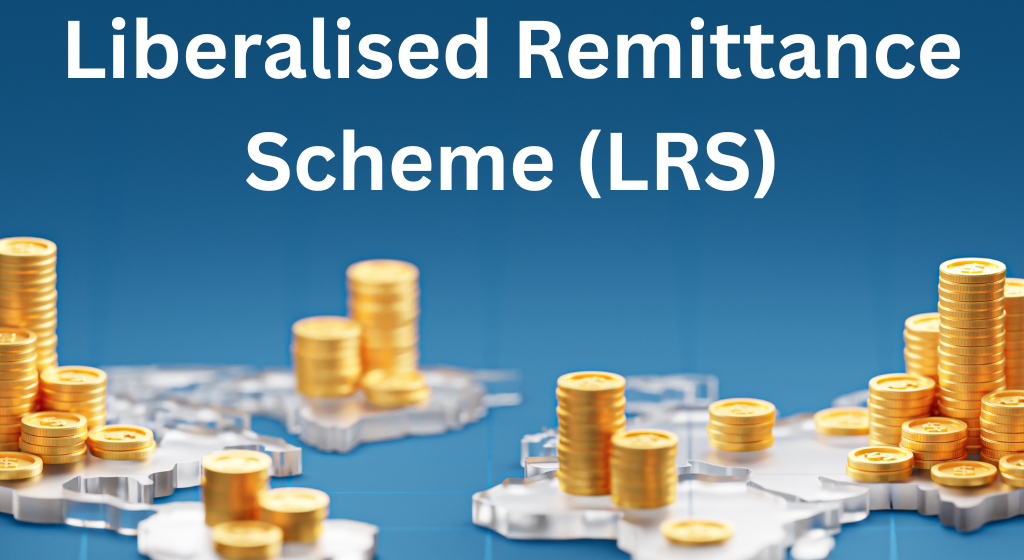If you’re an Indian resident looking to invest or send money abroad, you might have come across the term Liberalised Remittance Scheme (LRS). While the name might sound technical, the concept is quite simple once you break it down. In this blog, we will walk you through what LRS means, who can use it, how much money you can remit, and what it can be used for.
What is the Liberalised Remittance Scheme (LRS)?
The Liberalised Remittance Scheme (LRS) is a facility provided by the Reserve Bank of India (RBI) that allows resident individuals in India to send money outside the country for various permitted purposes.
This scheme was introduced in 2004 to allow Indians more freedom in managing their international financial needs — whether for education, travel, investment, or gifting money to relatives abroad.
Under LRS, resident individuals (not corporates, trusts, or partnership firms) can remit up to USD 250,000 per financial year (April to March) outside India without seeking special permission from the RBI.
Who Can Use LRS?
- Resident individuals only (Indian citizens who live in India for tax purposes)
- NRIs (Non-Resident Indians) cannot use LRS for remittances from their NRE/NRO/FCNR accounts. However, NRIs can receive money under LRS if someone from India sends it to them.
- This means if you’re an NRI, you are not sending money under LRS — but if your family in India is sending money to you (say, for education or maintenance), they are using LRS.
How Much Money Can Be Sent Under LRS?
As of now, the limit is USD 250,000 per person per financial year.
This limit includes all transactions under LRS for the year. If you remit more than this limit, you’ll need prior approval from the RBI.
For example, if you send:
- USD 100,000 for your child’s education abroad
- USD 50,000 for travel
- USD 80,000 for investing in US stocks
You’ve used up USD 230,000 of your annual limit. You’ll be left with only USD 20,000 more to remit in that year.
What Can LRS Be Used For?
Under LRS, residents can remit funds abroad for:
- Education: Tuition fees, living expenses, etc.
- Medical treatment abroad
- Travel: Holiday or business trips
- Gifts and donations
- Maintenance of close relatives abroad
- Investment in foreign stocks and bonds
- Purchase of immovable property (like buying a house abroad)
- Opening and maintaining foreign currency accounts overseas
What Cannot Be Done Under LRS?
There are some restrictions under LRS:
- Money cannot be used for gambling, lottery tickets, or banned magazines.
- You cannot remit money to countries listed as “non-cooperative” by the Financial Action Task Force (FATF).
- You cannot invest in businesses that deal with margin trading, cryptocurrency, or leveraged derivatives abroad.
- Also, LRS is meant for genuine personal or investment needs, not for setting up shell companies or routing money illegally.
How to Send Money Under LRS?
You can remit funds under LRS through:
- Banks (authorized dealers in foreign exchange)
- Online platforms tied up with licensed banks (for investing in global stocks, ETFs, etc.)
- You’ll need to fill up a form (A2 form) and declare that you’re complying with the rules of the Foreign Exchange Management Act (FEMA).
Conclusion
The Liberalised Remittance Scheme gives Indian residents more financial freedom to manage global expenses, investments, and family support. It’s a well-regulated system with clear rules and reasonable limits.
If you’re an NRI, you should understand LRS in case you’re receiving funds from India. And if you’re a resident Indian planning to send money abroad, being aware of LRS ensures you stay compliant with Indian laws and tax rules.
As global opportunities grow — be it in education, property, or investing — LRS will continue to be an important part of international financial planning for Indian families.

